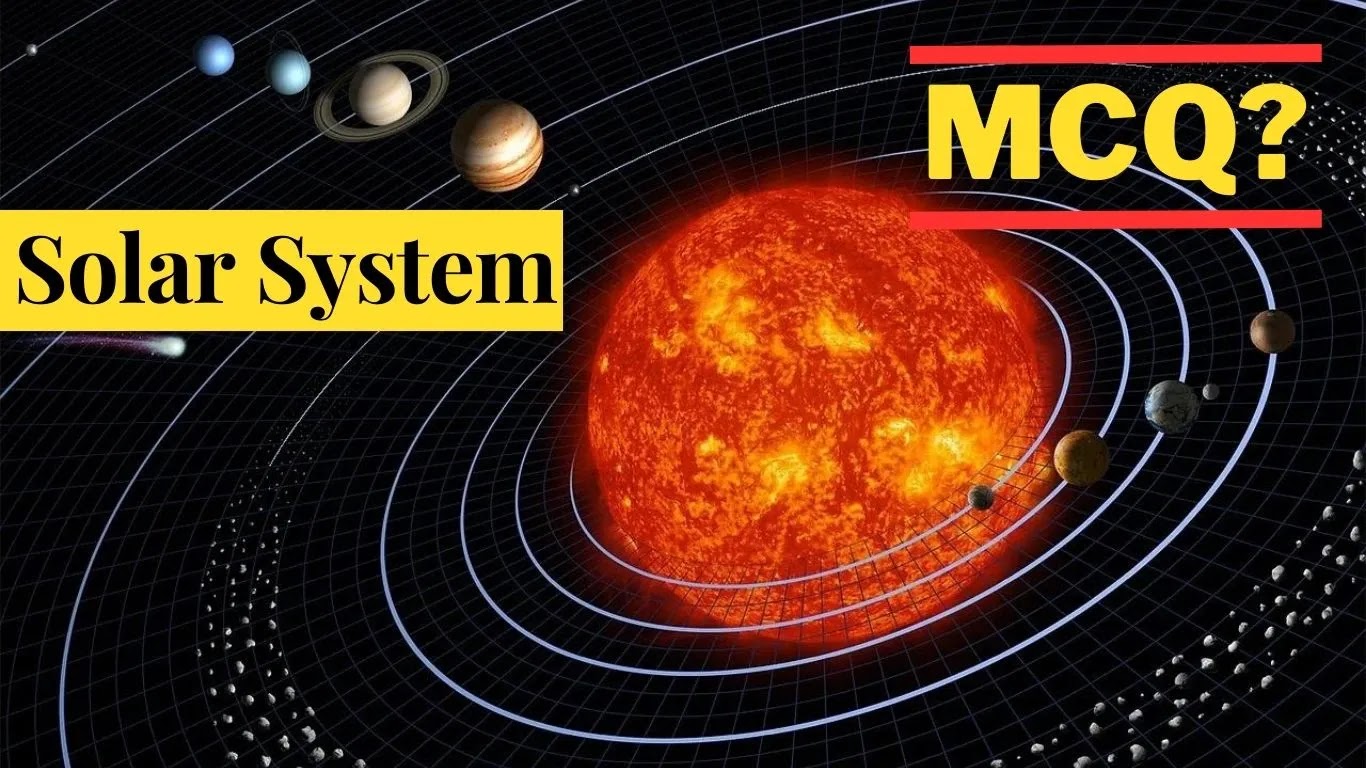Multiple-choice Questions (MCQ) on the Solar System:
Multiple Choice Questions (MCQ Quiz) on Solar System with answers. It is useful for various competitive exams like UPSC, UPPSC, BPSC, IAS/PCS and others.
Q 1. What is the largest planet in our
solar system?
a) Earth
b) Mars
c) Jupiter
d) Saturn
Answer (c)
Q 2. Which planet is known for its
prominent rings?
a) Venus
b) Uranus
c) Neptune
d) Saturn
Answer (d)
Q 3. What is the smallest planet in our
solar system?
a) Venus
b) Mercury
c) Mars
d) Jupiter
Answer (b)
Q 4. Which planet is closest to the Sun?
a) Venus
b) Mars
c) Mercury
d) Jupiter
Answer (c)
Q 5. Which planet has the most moons?
a) Earth
b) Mars
c) Saturn
d) Uranus
Answer (c)
Q 6. Which planet is known for its red
color?
a) Venus
b) Mars
c) Neptune
d) Saturn
Answer (b)
Q 7. What is the hottest planet in our
solar system?
a) Venus
b) Mercury
c) Earth
d) Jupiter
Answer (a)
Q 8. Which planet is often referred to
as the "evening star" or the "morning star"?
a) Venus
b) Mars
c) Mercury
d) Jupiter
Answer (a)
Q 9. Which planet is known for its Great
Red Spot, a massive storm?
a) Venus
b) Saturn
c) Uranus
d) Jupiter
Answer (d)
Q 10. Which planet has the most similar
conditions to Earth?
a) Venus
b) Mars
c) Jupiter
d) Saturn
Answer (b)
11. The scientist who proposed Big Bang
Theory was:
a)
Abbe Georges Lemaitre
b)
Edwin Hubble
c)
Nicholas Copernicus
d)
Aryabhatta
Answer (b)
12. The sun appears to be the closest to
the earth on:
a)
January 3
b)
July 4
c)
September 5
d)
December 4
Answer (a)
13. On June 21 the Sun’s rays fall
vertically on the:
a)
The Tropic of Cancer
b)
The Tropic of Capricorn
c)
The Equator
d)
The Arctic Circle
Answer (a)
14. The apparent movement of the Sun is
overhead the Equator twice a year on:
a)
Dec 22 and Mar21
b)
Mar21 and Sep23
c)
Jun 21 and Dec 22
d)
Sep 23 and Dec22
Answer (b)
15. The windiest planet is:
a)
The Saturn
b)
The Neptune
c)
The Jupiter
d)
The Mars
Answer (b)
Q 16. Which celestial body is considered
a dwarf planet?
a)
Mercury
b)
Pluto
c)
Mars
d)
Venus
Answer (b)
Q 17. Which planet in the Solar System
has the highest density?
a)
Earth
b)
Uranus
c)
Neptune
d)
Jupiter
Answer (a)
Q 18. What is the time taken by the
light of the Sun to reach the Earth?
a)
8 Minute 10 seconds
b)
8 Minute 20 seconds
c)
8 Minute 30 seconds
d)
7 Minute 16 seconds
Answer (b)
Q 19. Which of the following part of the
Sun is visible at the time of the eclipse?
a)
Photosphere
b)
Corona
c)
Chromosphere
d)
Core
Answer (b)
Q 20. Which is the brightest planet in
the universe?
a)
Mercury
b)
Venus
c)
Earth
d)
Saturn
Answer (b)
Q 21. What is the belt between the orbit
of mars and Jupiter called?
a)
Asteroids
b)
Comets
c)
Meteor
d)
Meteorite
Answer (a)
Q 22. Which of the following part of the
Sun is visible to humans?
a)
Photosphere
b)
Corona
c)
Chromospheres
d)
Core
Answer (a)


Post a Comment
Post a Comment
Thanks...keep in touch 🤟